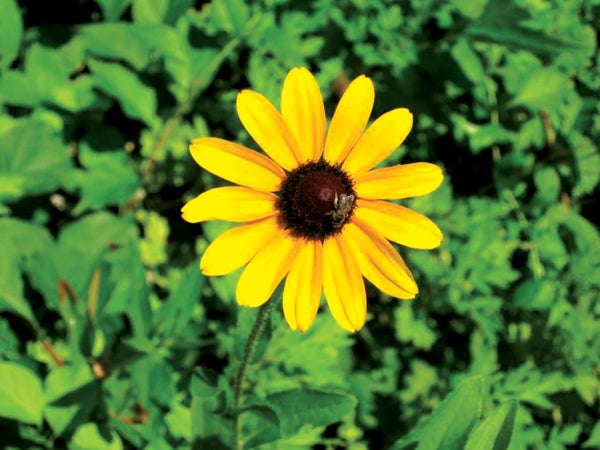How to plant, grow, and care for black-eyed Susans
Published 1:03 pm Thursday, July 2, 2020

- Black-Eyed Susans are an attractive addition to any garden. After the first year, the flowers re-seed themselves.
|
Getting your Trinity Audio player ready...
|
Black-eyed Susans (Rudbeckia hirta) are native to North America and one of the most popular wildflowers grown. They tend to blanket open fields, often surprising the passerby with their golden-yellow beauty.
Members of the aster family,Asteraceae, the “black eye” is named for the dark, brown-purple centers of its daisy-like flower heads. The plants can grow to over 3 feet tall, with leaves of 6 inches, stalks over 8 inches long, and flowers with a diameter of 2 to 3 inches.
Butterflies, bees, and a variety of insects are attracted to the flowers for the nectar. As they drink the nectar, they move pollen from one plant to another, causing it to grow fruits and seeds that can move about easily with the wind.
These plants bloom from June to October. Note that they can be territorial in that they tend to squash out other flowers growing near them.
Black-eyed Susans are good for cut flowers; they also work well for borders or in containers.
PLANTING
Plant black-eyed Susans when the soil temperature has reached 70°F for best seed germination. In many parts of North America, the planting period is March to May. The flower will flower June to September. Germination takes 7 to 30 days.
Plant seeds in moist, well-drained soil.
These hearty flowers really enjoy the sun. They prefer full sun, though they’ll grow in partial sun.
Sow by seed in loosely covered soil.
It’s best if soil is fertile (not poor) though they can tolerate tough conditions.
Black-eyed Susans generally grow between 1 and 3 feet tall (though they can grow taller) and can spread between 12 to 18 inches, so plant seeds closer to prevent lots of spreading or plant further apart to make a nice border.
CARE
Check your plants regularly to see if they need watering. Make sure they don’t dry out.
Divide perennial types every 3 to 4 years to ensure healthy plants and to prevent excessive spreading.
Be sure to remove faded/dead flowers to prolong blooming.
You can cut back black-eyed Susans after they flower and a second, smaller bloom may occur in late fall.
After the first season, black-eyed Susans can reseed themselves.



